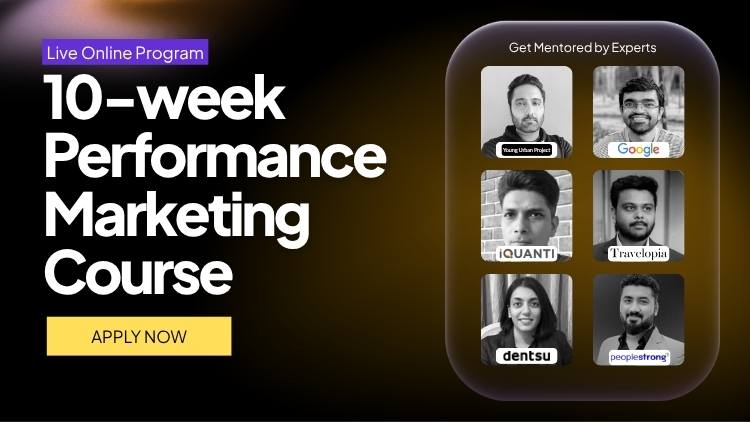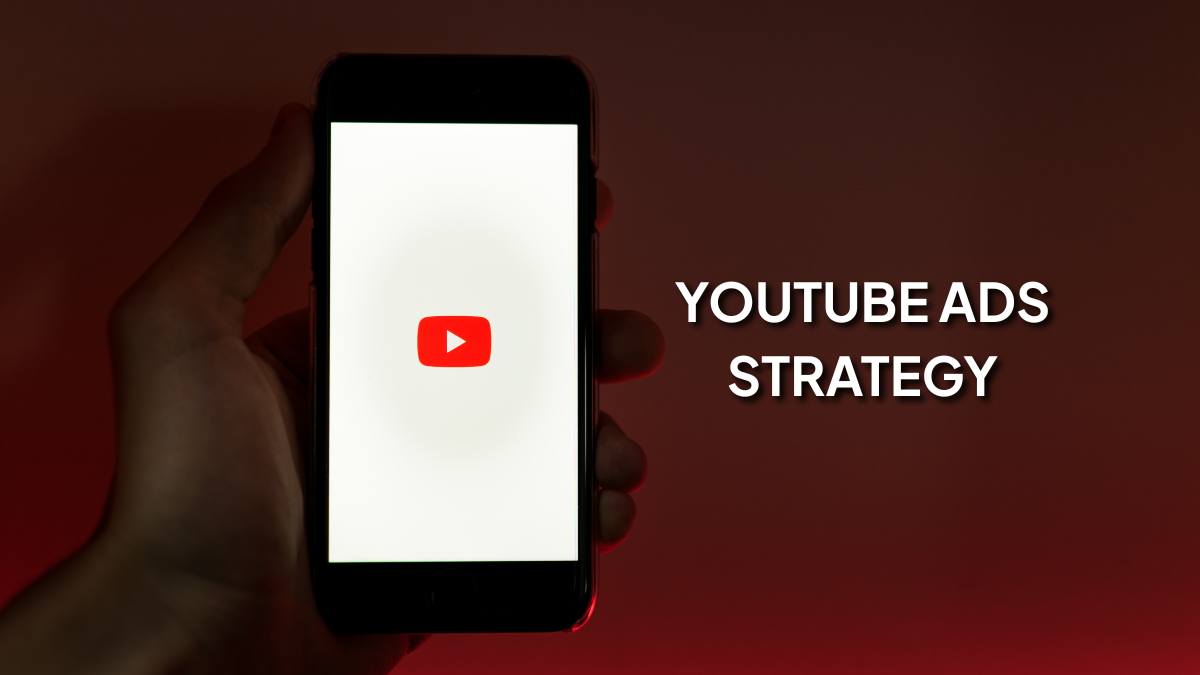Table of Contents
Introduction
YouTube isn’t just cat videos and music anymore. It’s grown into one of the most powerful ad platforms on the internet, and in 2025, it’s only getting bigger. With over 2.7 billion users showing up every month and more than a billion hours of content watched every day, this is where people come to be entertained, educated, and yes, marketed to.
For marketers, that opens up a massive opportunity. Whether you’re trying to build brand awareness, generate leads, or drive real sales, a strong YouTube Ads Strategy can help you do it, with more visual impact and smarter targeting than most platforms out there.
So, who should be using YouTube ads?
- B2B brands building trust
- Product companies chasing impulse buys
- Coaches, consultants, creators with something to launch
When should you pick YouTube over Meta or Google Ads?
- You want rich storytelling that outperforms static banners
- Visual demonstrations, think makeup routines, tech unboxings, software walkthroughs
- To reach users in a lean-back mindset, ready to watch rather than scroll
Also Read: How to Become a Google Ads Specialist
Understanding YouTube Ad Formats
In 2025, YouTube offers a spectrum of ad formats. Each has its sweet spot, knowing when to use which is key.
1. Skippable In‑Stream Ads
When it shows: Play before, during, or after a video. Viewers can skip after 5 seconds.
Best for: Brand awareness and reach at low cost. Attention is earned, not bought.
Pros: You only pay when someone watches 30 seconds or engages (like clicking).
Cons: Many people skip after the 5‑second mark, so your message better land fast.
2. Non‑Skippable In‑Stream Ads
Length: Typically 15–20 seconds (some regions still use 30 seconds).
Best for: Complete message delivery, ideal for short stories or promos.
Pros: Guaranteed full views.
Cons: More expensive CPMs and risk of viewer irritation, so your creative needs to shine.
3. Bumper Ads (6‑Seconds)
Speed punches: Ultra‑short, perfect for reinforcing your brand or message.
Best for: Frequency and brand recall.
Pros: Affordable, high shareability, mobile‑friendly.
Cons: Message must be ultra‑focused.
4. In‑Feed Video Ads (Discovery Ads)
Appearance: Show in search results or the YouTube homepage sidebar.
Best for: Audiences actively searching for solutions, like software reviews or how‑to guides.
Pros: Intent‑driven clickers.
Cons: Requires a compelling thumbnail + title to stand out.
5. Masthead Ads
Location: YouTube’s homepage, vast reach, premium placement.
Best for: Major launches, events, brand milestones.
Pros: Massive exposure.
Cons: Costly and often require direct deal with YouTube sales reps.
6. Outstream Ads
Play outside YouTube: Partner apps and mobile sites.
Best for: Extending reach beyond YouTube.
Pros: Cost‑efficient; perfect for mobile‑only brands.
Cons: Lower context, viewers aren’t in a “video‑watching” mindset.
7. YouTube Shorts Ads
Trend of the day: Vertical Short‑form videos (15–60 seconds).
Best for: Gen Z, creators, impulse trends.
Pros: Huge reach potential.
Cons: Ads feel native, so they’re less interruptive, but also less ad‑like.
8. Overlay Ads
Display banners over videos (desktop only).
Best for: Supplemental calls‑to‑action (CTAs) during relevant content.
Pros: Great for driving clicks while users are engaged.
Cons: Easy to ignore if your video creative doesn’t reinforce it.
Comparison Table
| Format | Length | Best For | Pro tip |
| Skippable | 15–30 sec | Awareness, reach | Nail the hook in <5 sec |
| Non‑Skippable | 15–20 sec | Full message delivery | Make it feel more like entertainment |
| Bumper | 6 sec | Brand recall | Focus on one idea |
| In‑Feed / Discovery | Varies | Search‑intent driven | Use eye‑catching thumbnail/title |
| Masthead | Varies | Large‑scale launches | Needs premium budgets + big budgets |
| Outstream | 6–60 sec | Mobile audience | Keep CTAs clear and mobile‑focused |
| Shorts | 15–60 sec | Gen Z and trends | Lean into trending formats & sounds |
| Overlay | Banner sized | Additional call to action | Coordinate with your main video message |
How to Build a Successful YouTube Ads Strategy
1. Define Your Campaign Objective
Start with the “why.” Are you aiming to:
- Get your name in front of people (Brand Awareness)?
- Drive sign‑ups, downloads, form fills (Leads)?
- Push purchases or subscriptions (Sales)?
This mission shapes everything: format, targeting, bidding.
2. Pick the Right Ad Format
Match format to objective.
E.g., Bumper + Skippable = top‑of‑funnel; In‑Feed + Retargeting = bottom‑of‑funnel.
3. Craft a Compelling Video Creative
Hook in first 5 seconds
This is make-or-break: a provocative question, visual flash, or bold claim.
Add emotion or curiosity
You’re more likely to click if you’re laughing, surprised, or empathetic. Yes, people buy on feelings.
Use strong CTA
“Sign up now,” “Learn more,” “Watch next”, make it simple and action-oriented.
4. Target the Right Audience
This is where the magic happens. You can have the best ad in the world, but if it’s hitting the wrong eyeballs, it won’t do a thing for your leads or sales. YouTube, via Google Ads, gives you insanely specific targeting options, but not all are equally effective.
Let’s break it down:
Custom Segments (Search Intent-Based)
This one’s a gem most marketers still underuse. You can target people based on the actual search terms they’ve typed into Google recently. Think about that, someone searching “best noise-cancelling headphones” is miles closer to buying than someone passively watching a tech vlog.
Use this to go after high-intent, low-funnel users.
Affinity Audiences vs. In-Market Audiences
Google gives you prebuilt groups.
- Affinity is more like long-term interests. Stuff they regularly engage with, like “Tech Enthusiasts” or “Fitness Buffs.” Good for awareness.
- In-Market is short-term, action-ready behavior. Like people actively researching “email marketing tools” or “online MBAs.” These are the hot leads.
Pro tip? Layer these two. Say you’re selling an AI copywriting tool, target people “in-market” for marketing software and “affinity” audiences interested in content creation.
Retargeting & Lookalikes
If someone visited your site, watched a video, or clicked a previous ad, retarget them. It’s a warm audience. You already spent money getting their attention. Don’t let them forget you.
And for lookalikes (called “similar audiences” in Google-speak), they’re people who behave like your converters. It’s not perfect, but often a great way to scale.
5. Set Your Budget and Bidding Smartly
This part can either make or break your ROI. It’s easy to burn money on YouTube ads if you just “set it and forget it.” A few notes:
- Max CPV (Cost-Per-View): Good if you want control over what you’re paying for views. But may limit scale if your bids are too low.
- Target CPA (Cost Per Acquisition): Better if your pixel is trained. Google will try to get conversions within your desired cost.
- Maximize Conversions: Great for early testing, especially when you don’t have clear benchmarks yet.
Generally speaking, if you’re running lead-gen ads with a strong landing page, Target CPA tends to perform well after some learning.
Also Read: Performance Marketing Metrics
6. Optimize for Mobile Viewing
More than 70% of YouTube watch time comes from mobile (Source). That’s huge. So you have to think vertically (especially with Shorts), use larger fonts, bold visuals, and keep your pacing fast.
What works on desktop, slow intros, tiny text, muted tones, often flops on mobile.
Also, test your video with sound off. A lot of users scroll in silence, so your visuals have to carry the message. Use subtitles, captions, or kinetic typography to get your point across without relying on audio.
7. A/B Test Creative and Placements
This is non-negotiable. You can’t improve what you don’t test.
Start with multiple video variations, maybe change the first 5 seconds, CTA, or even the tone. Run them side by side. Sometimes a minor tweak (like color grading or background music) can change the game.
Also test:
- Ad formats (Skippable vs. In-Feed)
- Targeting types (Keywords vs. Topics)
- Devices (Mobile-only vs. All devices)
Give each variation enough spend to collect solid data. Don’t kill a test too early. Sometimes performance spikes after the algorithm finishes learning.
8. Track Key Metrics & Iterate
Don’t obsess over views alone. That’s surface-level. Dig into:
- View rate– Are people actually watching?
- Click-Through Rate (CTR)– Are they interested enough to click?
- Watch time– Are they staying engaged?
- Conversions– Are they doing what you want them to?
Use YouTube Studio and Google Ads dashboard together. Look for drop-off points in your video, if people are bouncing 10 seconds in, your hook might be off. Or maybe your targeting is too broad.
Remember: iteration is the name of the game. The best YouTube advertisers don’t guess once, they test constantly, learn, and adjust. That’s where the real ROI lives.

Enroll Now: AI-Powered Performance Marketing Course
Advanced YouTube Ads Tips Most Marketers Miss
This is the stuff you don’t hear on stage at marketing conferences, but the smart brands, the ones quietly crushing it? They’re doing this behind the scenes.
1. Use Google Ads Keyword Planner for YouTube Campaigns
Most people think this tool is just for search ads. Nope. You can use it to dig up commercial intent keywords and then build custom intent audiences around them.
So let’s say you find keywords like “best podcast microphone” or “cheap DSLR camera”, now you can target people who recently searched those on Google and then hit them with a YouTube video ad. Laser-focused. Scary effective.
2. Leverage YouTube Placement Targeting
Here’s a little hack: Instead of targeting broad interests or keywords, hand-pick specific YouTube videos or channels where you want your ad to show up.
If you’re selling fitness gear, run ads on popular workout channels. If you’re pushing a SaaS product, target marketing or productivity channels. Think of it like influencer marketing, but without paying the influencer.
You can even use tools like Vidooly or native filters inside Google Ads to find which videos get the best engagement in your niche.
3. Include Companion Banners
This one’s small but impactful. When you run in-stream ads, you can upload a companion banner, a static image that sits to the right of your video ad (on desktop).
Think of it like a billboard that stays even after the video ends. If someone skips your ad but stays on the page, that banner gives them a second chance to click.
4. Run Sequential Video Funnels
This is next-level, but absolutely worth trying.
Instead of just blasting the same video to everyone, build a sequence.
- First ad: Tease the idea (problem + curiosity).
- Second ad: Dive into how you solve it (demo, social proof).
- Third ad: Strong CTA to buy/sign up/learn more.
Google lets you set up ad sequences based on how users interacted with the first one. So it’s like remarketing, but with storytelling.
5. Add Sitelink Extensions (Yes, Even for Video Ads)
If your campaign supports it (especially on mobile), enable sitelinks beneath your video ad. These are clickable text links that drive to different parts of your site, like pricing, testimonials, or your free trial page.
Especially useful if your video mentions multiple features or offers.
6. Add Subtitles or Captions
Don’t assume everyone watches with sound. On mobile, during commutes, or in quiet spaces, captions are key.
Bonus: If you’re targeting global markets or multilingual users, use language-specific subtitles. Makes your ad instantly more accessible and relatable.
Also Read: Youtube video ad best practices: ABCD Framework
How to Optimize Your YouTube Ads Over Time
Most campaigns don’t flop because of bad ideas, they flop because nobody’s watching the data.
1. Break Down Performance by Device, Age, Gender
You might find your ad performs way better on mobile, or that women aged 25–34 click 2x more than men. Use this data to double down on your winners and cut the rest.
2. Exclude Poor-Performing Placements
Some channels or videos just don’t convert, even if the content seems related. Watch your placement report. If a channel is burning budget with no ROI, exclude it.
3. Adjust Video Length Based on Drop-Off
If you notice 60% of people drop off after 15 seconds, maybe your video’s too long, or your story arc is slow. Try shorter versions. Chop off the intro. Get to the point faster.
4. Use Brand Lift or Conversion Lift Studies
If you’ve got budget (and traffic), run a Brand Lift Study to measure actual brand awareness, or a Conversion Lift Study to see how your ads are driving sales compared to a control group.
These tools aren’t for everyone, but if you’re scaling a serious campaign, it’s worth it.
Also Read: Instagram Ads Cost in India
Common Mistakes in YouTube Ads Strategy (And How to Fix Them)
Let’s be honest, we’ve all made at least one of these.
- Targeting too broad or too niche
Fix: Start with tighter audiences, then expand slowly. Use layered targeting (e.g., topic + intent keyword). - Running “TV-style” ads on YouTube
Fix: YouTube isn’t TV. Make content that feels native, direct address, quick cuts, real energy. - Wasting the first 5 seconds
Fix: Open with movement, a question, or pattern-break. Get them to stop and think. - No clear CTA
Fix: Say it out loud. Put it on screen. Make it easy to act. - Not using negative keywords or exclusions
Fix: Clean your traffic. Exclude kids content, unrelated topics, and anything irrelevant.
Also Read: Right Budget Google Ads Campaign
Tools to Supercharge Your YouTube Ads Strategy
Some tools just make life easier. These are a few we recommend:
- Vidooly– Spy on your competitors’ YouTube ads and channel stats
- TubeBuddy or vidIQ– Killer for keyword research, optimizing your video titles and tags
- Canva or Animoto– Easy tools to make clean, high-converting video creatives
- Google Ads Editor– Batch edit campaigns when you’re managing lots of ads
Also Read: Google Ads vs Facebook Ads
Conclusion
YouTube Ads aren’t some silver bullet, you can’t just upload a video, pick a budget, and hope leads roll in. It takes a bit of strategy, a lot of testing, and honestly… patience. But the upside? It’s massive. You’re not just interrupting someone’s feed, you’re showing up where people are already watching, learning, and exploring. That’s powerful.
Start with one clear goal. Build for mobile. Nail your hook in the first 5 seconds. And don’t be afraid to run ugly ads, some of the scrappiest videos perform better than polished brand stuff.
If something flops? Cool. Try again. Change the thumbnail. Switch the audience. This platform rewards experimentation.
So yeah, YouTube Ads aren’t overnight magic. But with a little hustle and the right mindset, they can turn into one of your most profitable traffic and sales channels.
Stay curious. Keep testing. And don’t overthink it too much. That’s how real growth happens.
FAQs: YouTube Ads Strategy
1. What is the best YouTube ads strategy for small businesses?
Start with in-feed or skippable ads, target specific keywords or channels, and keep your creative under 30 seconds. Focus on one action.
2. Which YouTube ad format works best for conversions?
In-feed video ads + retargeting audiences usually drive strong conversions. But test skippable in-stream with a punchy CTA too.
3. How do I target the right audience on YouTube Ads?
Use custom intent segments (based on Google search history), placements, and in-market audiences. Refine over time using performance data.
4. Can I use my existing YouTube videos as ads?
Yes, just make sure the video gets to the point quickly and includes a clear CTA. You can repurpose, but tweak if needed.
5. Is YouTube advertising effective for B2B companies?
Definitely. Especially for storytelling, product demos, or authority-building content. It’s underutilized in B2B, which is good news for you.
6. What should I do if my YouTube ads aren’t converting?
First, check your targeting. Then your video’s first 5 seconds. Finally, check your landing page. It’s usually one of those three.

